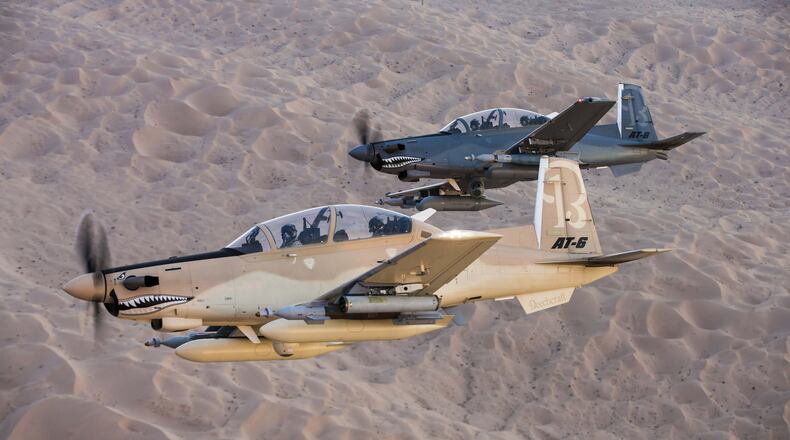The Air Force Strategic Development Planning and Experimentation Office at Wright-Patterson is overseeing the $6 million experiment.
RELATED: Air Force testing light-attack plane
Textron AirLand’s Scorpion jet and L3’s and Air Tractor’s AT-802L Longsword also had been evaluated last summer at Holloman Air Force Base, N.M., but will not be part of the next stage of the evaluation, the Air Force said.
Plans to test the planes in combat during the experiment were dropped. “At this time, we believe we have the right information to move forward with light attack, without conducting a combat demonstration,” Capt. Emily Grabowski, an Air Force spokeswoman, said in an email to this news outlet.
The experiments were meant to determine the cost to buy, operate and maintain the plane, if it can be mass produced quickly, and exported to other countries.
RELATED: Wright-Patt to oversee light-attack plane tests in New Mexico
“Will the U.S.A.F. get any?” asked Richard Aboulafia, an aviation analyst with Virginia-based Teal Group. “It would make the U.S. unique, as a wealthy country operating a plane commonly found in countries where the threats are as low as the budgets. You can’t rule that out. On the other hand, not including a combat testing phase seems to indicate a relatively low priority for this.”
RELATED: ‘We’re not moving fast enough,’ Air Force leader says
The Air Force has searched for a low cost alternative to flying expensive fighter and attack aircraft in lower threat environments for a potential buy in the future.
“If all we’re doing is making circles in the air and waiting for a call to drop weapons, you won’t have to do it at tens of thousands of dollars per hour operating costs,” Ravi Penmetsa, a Wright-Patterson-based project official, said in an interview last year.
In the next step of the experiment, the Air Force will evaluate maintenance and logistics demands, weapons and sensors, training scenarios, and ability to operate jointly with other countries, among a list of test goals.
About the Author
